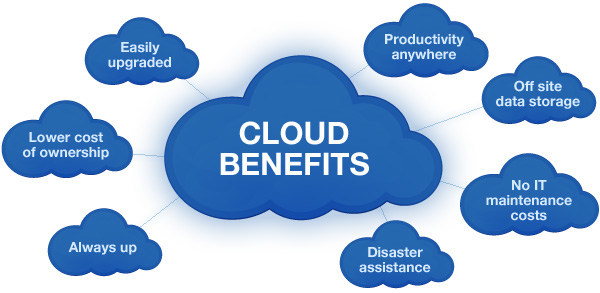Explaining the concept of Cloud computing advantages
Cloud computing advantages includes cost-efficiency, scalability, accessibility, and security, make it a compelling choice for businesses

In today's rapidly evolving technological landscape, the concept of cloud computing advantages has emerged as a game-changer for individuals and businesses alike.
The cloud has revolutionized the way we store, manage, and access data and applications, offering numerous advantages that have transformed the way we work and live.
Understanding the Cloud Computing
Cloud computing is a revolutionary paradigm in the realm of computing that entails the delivery of various services?ranging from storage and servers to databases, networking, software, and analytics?over the internet.
These servers, collectively referred to as "the cloud," provide a plethora of services on a pay-as-you-go or subscription basis.
Key Characteristics of Cloud Computing:
- On-Demand Self-Service: Users can provision and manage computing resources as needed, without requiring human intervention from the service provider.
- Broad Network Access: Cloud services are accessible via various devices with internet connectivity, ensuring ubiquitous access from anywhere, anytime.
- Rapid Elasticity: Cloud resources can be quickly scaled up or down based on demand, allowing for flexibility and cost-efficiency.
- Measured Service: Cloud usage is metered, enabling users to pay only for the resources they consume, similar to utility billing.
Now that we've established the foundational aspects of cloud computing, let's explore its myriad advantages.
Advantages of Cloud Computing
- Cost-Efficiency: Perhaps one of the most significant advantages of cloud computing is its cost-effectiveness. Traditional IT infrastructure requires substantial upfront investments in hardware and software, along with ongoing maintenance costs. In contrast, cloud computing operates on a pay-as-you-go model, reducing capital expenses and allowing organizations to scale resources as needed, ultimately lowering overall operational costs.
- Scalability and Flexibility: Cloud computing offers unparalleled scalability, enabling organizations to effortlessly adjust their computing resources to meet changing requirements. This flexibility is especially valuable for businesses with fluctuating workloads, as they can easily scale up during periods of high demand and scale down during quieter times.
- Accessibility and Mobility: Cloud services can be accessed from anywhere with an internet connection, providing users with the freedom to work remotely. This accessibility enhances collaboration, productivity, and work-life balance, as employees can work from home, on the road, or even from different parts of the world.
- Automatic Updates and Maintenance: Cloud providers handle the burden of infrastructure maintenance and software updates, ensuring that users always have access to the latest features and security patches. This relieves organizations from the time-consuming task of managing IT infrastructure.
- Enhanced Security: Cloud service providers invest heavily in robust security measures to protect their clients' data. They employ advanced encryption, authentication, and access control mechanisms to safeguard information, often exceeding the security capabilities of on-premises solutions.
- Disaster Recovery and Business Continuity: Cloud providers offer built-in disaster recovery solutions that replicate data across multiple data centers. This redundancy ensures data resilience and facilitates swift recovery in the event of a system failure or natural disaster, reducing downtime and data loss.
- Environmental Sustainability: Cloud data centers are designed for energy efficiency, often utilizing renewable energy sources. By sharing resources among multiple users, cloud computing reduces the overall carbon footprint and contributes to a more environmentally sustainable IT ecosystem.
- Competitive Advantage: Cloud computing empowers organizations to stay competitive by rapidly deploying new applications and services.
Types of Cloud Computing
- Infrastructure as a Service (IaaS): IaaS provides users with virtualized computing resources, including virtual machines, storage, and networking.
- Software as a Service (SaaS): SaaS offers fully functional software applications delivered over the internet on a subscription basis. Users can access these applications via a web browser, eliminating the need for local installation and maintenance.
- This model is highly scalable and cost-efficient, as users only pay for the computing resources consumed during execution.
Real-World Applications
The versatility of cloud computing has led to its adoption across various industries and applications. Here are some real-world scenarios where cloud computing plays a pivotal role:
- Cloud computing empowers businesses to streamline operations, enhance customer experiences, and drive innovation.
- E-commerce: Online retailers leverage the cloud to manage their websites, process transactions, and analyze customer data. This enables them to scale their operations during peak shopping seasons and deliver personalized shopping experiences.
- Government: Governments employ cloud computing to enhance citizen services, securely store sensitive data, and improve disaster response and recovery efforts.
The Future of Cloud Computing advantages
Its advantages, including cost-efficiency, scalability, accessibility, and security, make it a compelling choice for businesses and individuals alike.
What's Your Reaction?
















